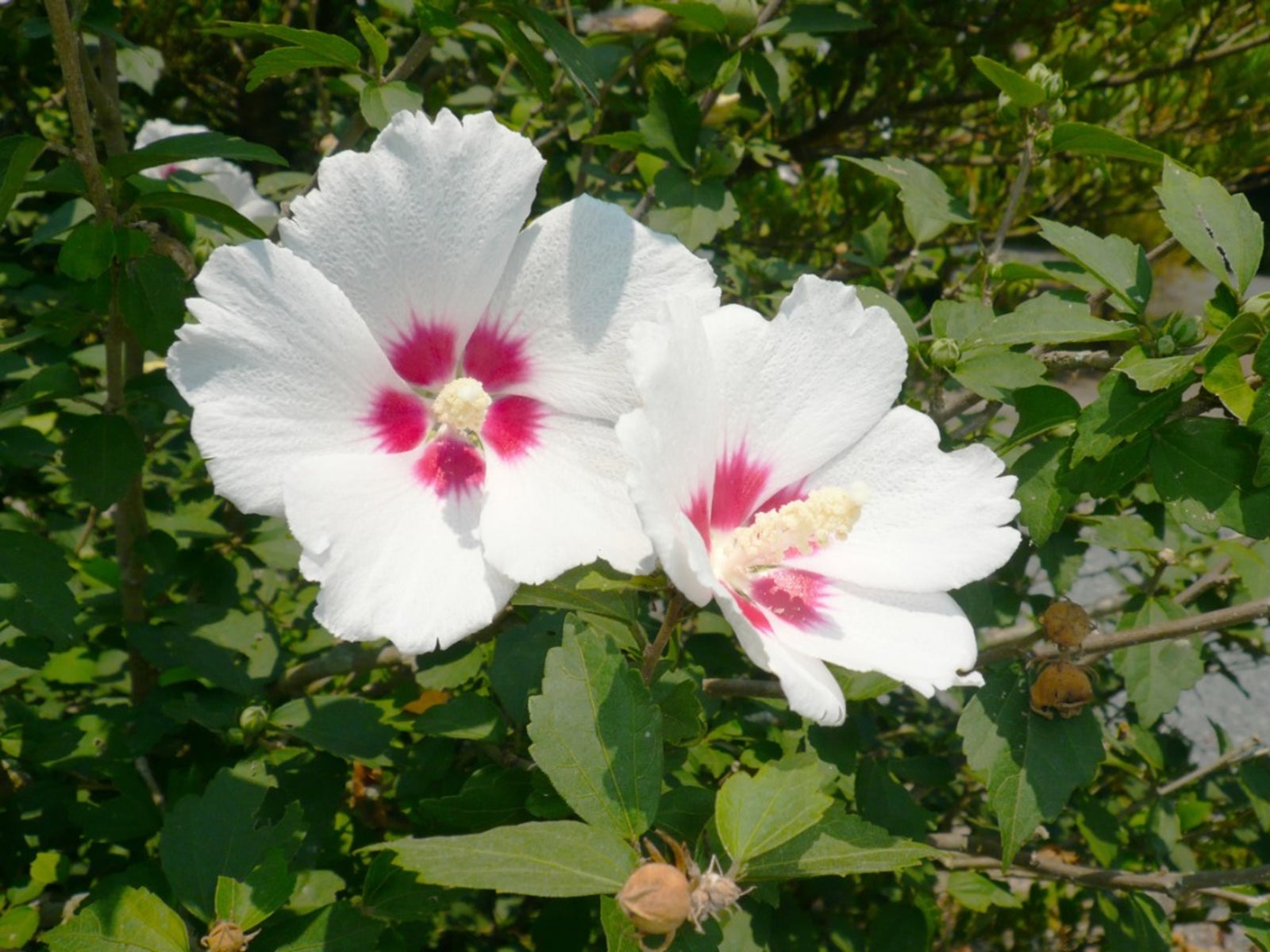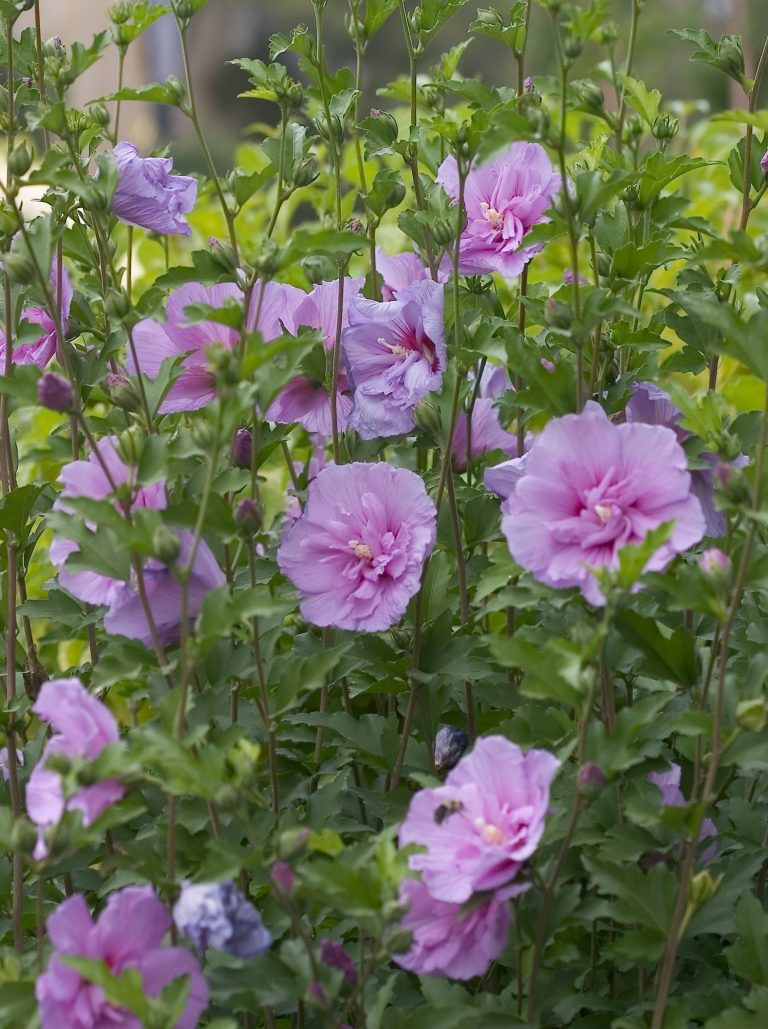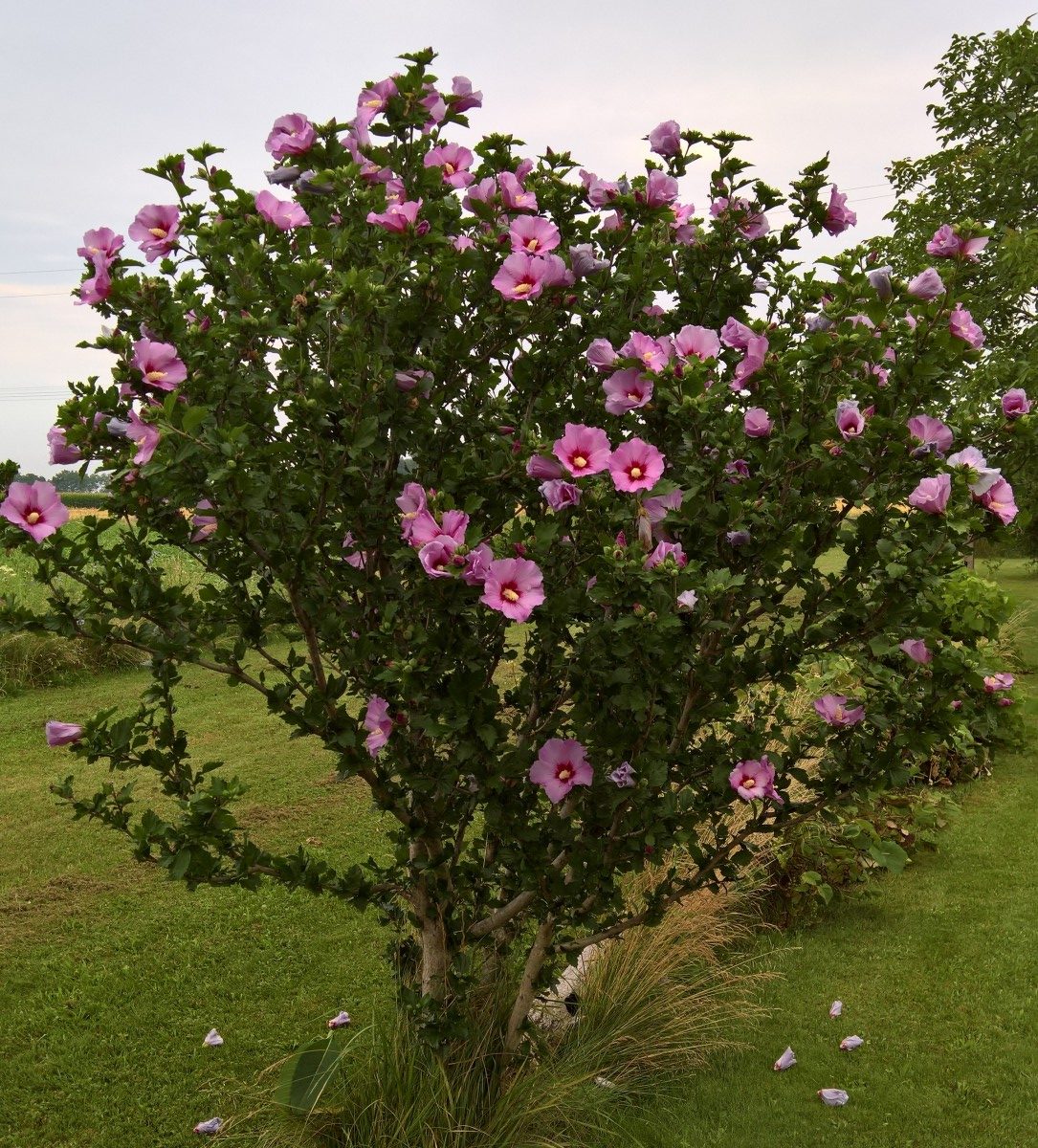How To Grow And Care For A Rose Of Sharon Plant
The Rose of Sharon, scientifically known as Hibiscus syriacus, is a beautiful flowering plant that is native to Asia. It is also commonly referred to as the shrub Althea or the Syrian hibiscus. This deciduous shrub can grow up to 10 feet tall and 10 feet wide, and produces stunning and showy flowers that range in color from white to pink, purple and blue, depending on the cultivar. If you are a gardener looking to add a touch of elegance and beauty to your garden or landscaping, the Rose of Sharon might be the perfect choice for you.

Plant Attributes
The Rose of Sharon is a tough and hardy plant that is well-suited to a range of climates, including those with hot summers and cold winters. It is also known for its tolerance to drought and poor soil conditions. Some other key attributes of the plant include:
- Growth rate: Fast
- Plant type: Deciduous shrub or small tree
- Hardiness zones: 5-9
- Light requirements: Full sun to partial shade
- Soil requirements: Well-draining, slightly acidic to slightly alkaline soil
Plant Care
The Rose of Sharon is a relatively low-maintenance plant once established, but does require some basic care to thrive. Here are some tips to keep your Rose of Sharon healthy and beautiful:
- Watering: The plant prefers moist but not soggy soil. Water deeply once or twice a week in hot, dry weather.
- Fertilizing: Fertilize the plant once in spring with a slow-release, balanced fertilizer.
- Mulching: Apply a layer of mulch around the base of the plant to help retain moisture and suppress weeds.
- Pruning: Prune the plant in late winter or early spring to remove dead or damaged wood, shape the plant, and encourage more blooms.
Pruning
Pruning is an important part of Rose of Sharon care, as it helps to maintain the plant's shape, promote more blooms, and remove any dead or diseased wood. Here are some tips for pruning:
- Timing: Prune in late winter or early spring before new growth appears.
- Tools: Use sharp, clean pruning shears or saws to avoid damaging the plant.
- Technique: Cut just above a healthy bud or branch to encourage new growth.
Propagation
If you want to propagate your own Rose of Sharon, there are a few methods you can try:
- Root cuttings: Take 6-8 inch cuttings from the plant in the fall, dip the cut end in rooting hormone, and plant it in a container filled with moist soil. Keep the soil moist and wait for roots to form before transplanting to a permanent location.
- Division: In early spring, dig up the plant and separate the root ball into smaller sections, each with a stem and some roots. Transplant the divisions to new locations and water well.
- Seeds: Collect the seed pods from the plant in the fall and plant them in containers or directly in soil in the spring. Be patient, as it may take a few years for the plant to reach maturity.
Potting & Repotting
The Rose of Sharon can also be grown in a container or pot, making it an ideal choice for those with limited garden space. Here are some tips for potting and repotting:
- Pot size: Choose a large container with good drainage that is at least 12 inches deep and wide.
- Soil: Use a well-draining potting mix with some perlite or vermiculite for extra drainage.
- Repotting: Repot the plant every 2-3 years into a larger container to allow for continued growth.
Common Pests & Plant Disease
While the Rose of Sharon is generally a hardy and disease-resistant plant, there are a few pests and diseases that can affect it. Here are some common ones to watch out for:
- Aphids: These small green or black insects can suck the sap from the plant, causing yellowing and distortion of leaves. Use insecticidal soap or neem oil to control.
- Scale insects: These small, flat insects can cause yellow spots and browning of leaves. Use insecticidal soap or neem oil to control.
- Rust: This fungal disease can cause orange or brown spots on leaves, along with leaf drop. Use a fungicide to control.
Common Problems
While the Rose of Sharon is generally a trouble-free plant, there are a few common problems that gardeners may encounter:
- Yellowing leaves: This can be caused by a number of factors, including over-watering, poor drainage, low nitrogen, or pests/disease. Address the underlying cause and adjust care accordingly.
- No blooms: This may be due to over-fertilization or pruning at the wrong time. Avoid fertilizing too much and prune in late winter/early spring.
- Root rot: This can be caused by over-watering or poor drainage. Improve drainage or move the plant to a drier location.
In conclusion, the Rose of Sharon is a beautiful and versatile plant that can add color and elegance to any garden or landscaping. By following these tips for planting, care, and maintenance, you can enjoy the stunning flowers and hardy nature of this wonderful plant for years to come.



Post a Comment for "How To Grow And Care For A Rose Of Sharon Plant"